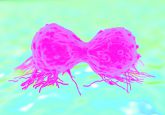Roadside Saliva Test for Marijuana Intoxication Developed by Stanford Engineers

The legalisation of cannabis use in over 20 US states has created the problem of on-the-spot testing of whether people are driving under the influence. Magnetic nanotechnology has been used by researchers at Stanford University (Stanford, CA, USA) to create a potential solution in the form of a practical roadside test for marijuana intoxication.
Currently, there are no devices that can measure a driver’s levels of marijuana as effectively as alcohol intoxication is tested with a breathalyzer. The Stanford device has potential to be used in this way as it can detect the concentration of THC, not just its presence, in saliva.
To develop the device, the Stanford team utilized magnetic biosensors within a mobile device that has the capacity to detect miniscule molecules of THC, via harnessing the behaviour of magnetism in nanoparticles combined with an immunoassay.. A cotton swab could be used by officers to collect a saliva sample and the results could be read on a laptop or smartphone in less than three minutes.
“To the best of our knowledge, this is the first demonstration that magnetoresistive biosensors are capable of detecting small molecules,”commented lead author Shan Wang.
As well as being less invasive, THC in saliva may be a better measure of impairment than THC in urine or blood. This newly developed device can also detect concentrations of THC in the range of 0 to 50 ng/ml l of saliva. This is crucial as although there’s still no consensus on how much THC in a driver’s system is too much, previous studies have estimated a cutoff between 2 and 25 ng/mL, which is within the capacity of the device.
This precision is achieved by zeroing in on the behavior of magnetism in nanoparticles. In the test this technique is combined with an immunoassay.
The biosensors could additionally be used to detect any small molecule; the platform could therefore be used to test for morphine, heroin, cocaine or other drugs, with the device already attaining promising results after initial morphine screening
Source: Lee R, Choi J, Shultz TO, Wang SX. Small Molecule Detection in Saliva Facilitates Portable Tests of Marijuana Abuse. Anal.Chem. 88(15) 7457–7461 (2016);
http://news.stanford.edu/2016/09/08/potalyzer-roadside-marijuana-tests/






